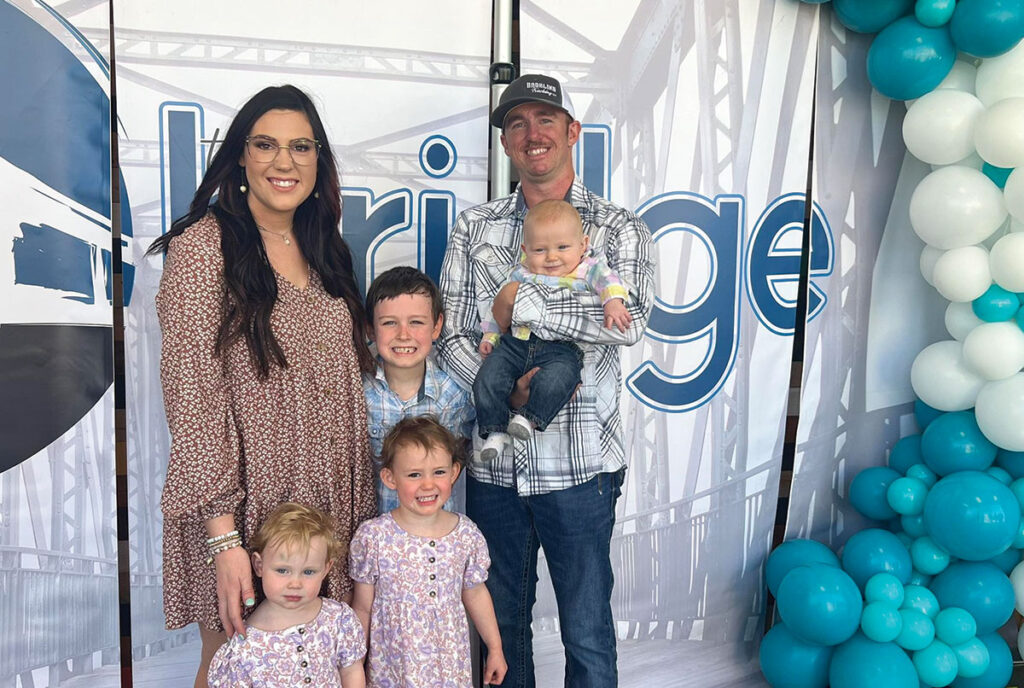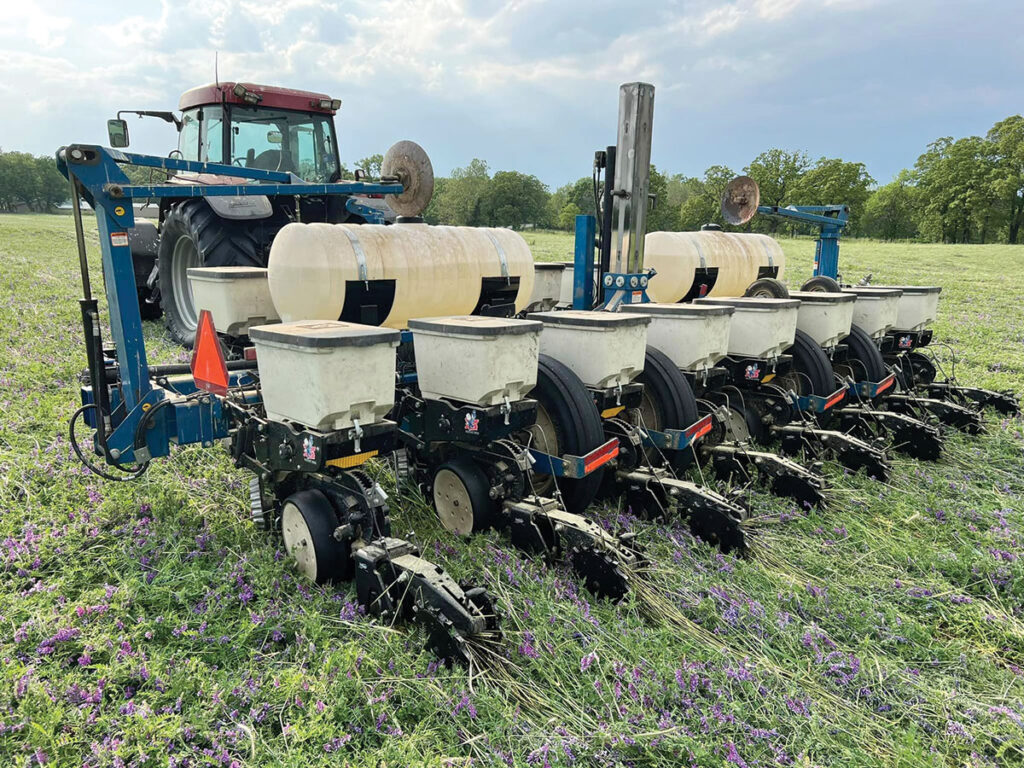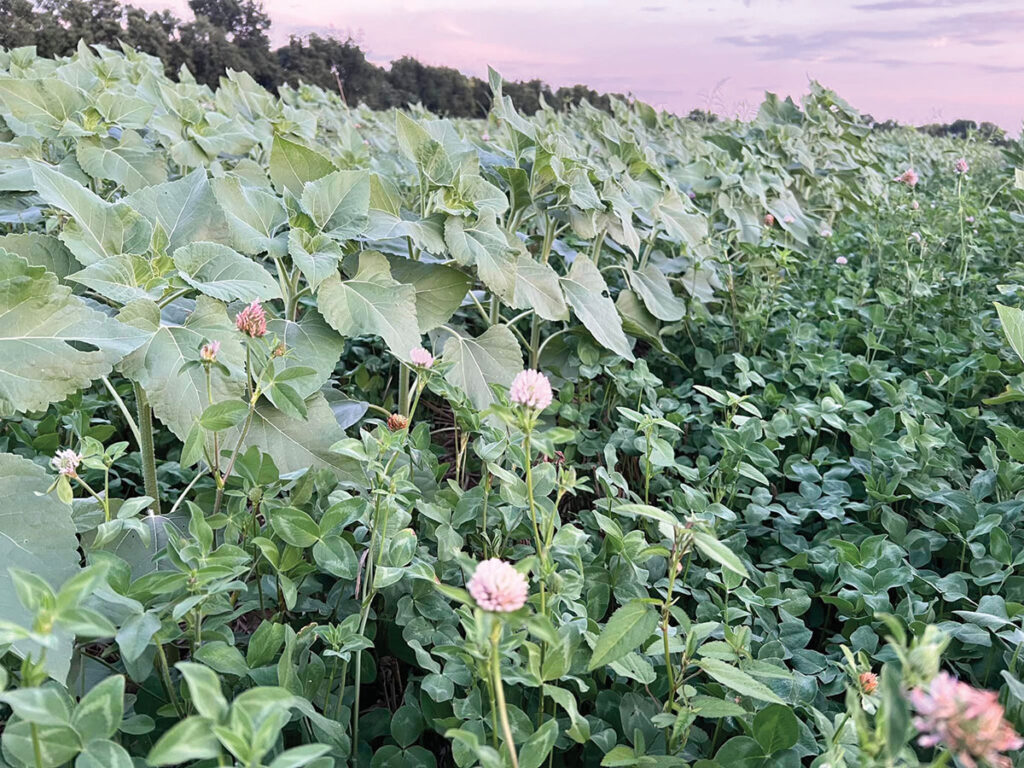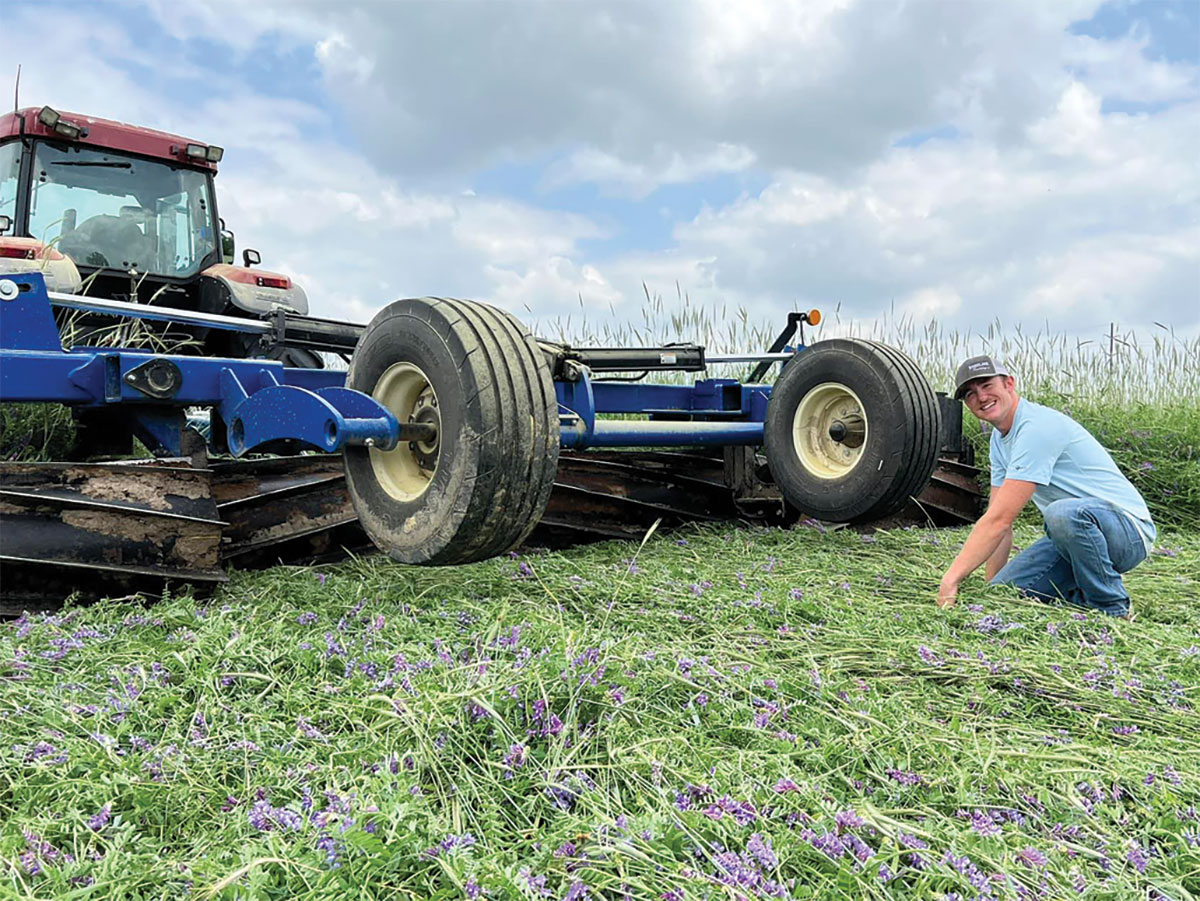
Kincaid Farms switched to no-till, added cover crops and markets for its products
JASPER, MO. – Macauley Kincaid always wanted to be a farmer.
“When I got out of high school, it was a goal; it’s in my blood,” he said.
Macauley’s family farmed several thousand acres, but he said there wasn’t room for him at the family’s operation, so he struck out on his own at 18 with a rented farm.
“A year later, they sold it, and the largest farmer in my area purchased that ground, so I didn’t think I was going to be able to farm at that time, and I was still working an outside job,” he recalled. “My father passed away when I was 20, and I inherited 74 acres.”
Macauley began to build equity in his inherited acreage and rented additional ground. Unfortunately, things didn’t go as planned.
“By the time I was 23, 24, we couldn’t advance our line of credit anymore,” Macauley said. “Our farm was in a bad state. We were 100 percent conventional and treated our farm like a chemistry set.”
He said they were using chemicals to treat weeds and insects, and it was failing.
“I realized my limiting factor wasn’t the nutrients. It wasn’t the additives I did with the crops; it was water. I wasn’t utilizing the water,” Macauley said. “I started thinking about how to improve filtration, but I knew I couldn’t afford tillage equipment. We were no-tilling, but we weren’t doing it enough.”
Macauley attended an organic conference and began to learn about cover crops and their value. He reached out to regenerative agriculture experts Gabe Brown and Ray Archuleta.
“They taught me how soil actually works, and in 2016, I became committed to regenerative agriculture,” Macauley said.
Today, the 29-year-old, along with his wife Kayla and their children, Jaxton (9), Emmalyn (4), Everleigh (3), and Walker (1), farms 880 acres of crops, runs 80 cow/calf pairs and custom grazes.
“I believe no-till is the key to cover crops, and cover crops is the key to cattle,” Macauley said.
Kincaid Farms plants 13 cash crops and more than 50 species of cover crops, raising everything they can, from Korean Lespedeza, corn, soybeans, sunflowers, barley, oats, milo, wheat and rye.
“It’s kind of like the old saying, ‘Don’t put all of your eggs in one basket,” Macauley said. “We are 100 percent a no-till operation, 100 percent cover crop, and 80 percent of our land is fenced with water sources.”
Diversity is a principle of soil health at Kincaid Farms.
“You need diversity of your cash crop and the diverse income,” Macauley explained. “Now I don’t have to solely rely on only getting a check twice a year if I were a corn and bean farmer; I get checks coming in year-round.”
The diversity of income includes selling clean seed.
“I have a customer base for Korean Lespedeza and open-pollinated corn,” Macauley said. “I’ve sold a lot of barley, rye and oats for cover crops on other farms. We’ve built up our cover crop base, and last year, we sold about 50,000 acres worth of cover in our area. We’ve created a business and a great network.”
While the farm has a regenerative approach, it is not organic.
“We had organic farming in the 1930s, and we had the Dust Bowl,” Macauley explained. “I like regenerative because it focuses on how soil functions, mimicking what nature shows us. Whenever I want to make a decision, I think about how nature produces something. I know row crops monocultures are not natural, but that’s where the cover crops play a piece, and the way we utilize nutrients play a piece.”
“There’s been a lot of science that crops are healthier when the soil is healthier, then the animals that eat that crop are healthier, then the humans who consume those animals and vegetables, hopefully, will be healthier. I have data on my farm showing tissue samples that the nutrient content in our plants and grains is higher than that of my conventional neighbors. That shows me that the products I raise on my land are better compared to conventional and organic farms in my area. I think we can have a superior product by being regenerative.”
Because they have multiple, smaller fields, it allows for a multi-year rotation.
“I don’t want to have the same crop, if I can keep from it, in a least a six-year period. Our farms have different crops growing on them all the time.”
Since converting to regenerative agricultural practices, Kincaid Farms has improved the soil and increased cash crop yields.
“Our yields have gone up, and our expenses have gone down tremendously,” Macauley explained. “We don’t have to use herbicides because our cover crops leave residue on the surface and keep weeds down. We haven’t used P and K (phosphorus and potassium) in six years, and our soil levels haven’t decreased. Nutrients are abundant in our soil; we have to make them available, and we do that with plants and microbes.”
Kincaid Farms applies a water-soluble fertilizer composted on nitrogen, sulfur and boron.
“It’s very important that everything I apply on my farm stays on my farm,” Macauley said. “We have timely application of when those plants need those nutrients, so we aren’t leaching things off our farm and into the environment.”
The Kincaid’s cattle herd contains specially selected South Polls and a mixture of Angus, Salers and Charolais.
“It’s been a bigger piece (of the farm) for five years,” Macauley explained of the cattle operation. “There are so many opportunities for row croppers. As I travel around, I see bare-row crop fields with nothing growing on them next to a pasture where they are feeding hay. Last year, I only fed seven bales, and this year, I haven’t fed a single bale; we are grazing.”

Macauley has selected smaller-framed females that weigh about 1,000 pounds for his grazing operation.
“Short legs and fat guts are easier to finish,” he said. “The average cow in Missouri is 1,500 pounds. I can run three of my 1,000-pound cows to two 1,500-pound cows, and my animals can be more profitable. I can sell more pounds of beef because my cows wean a heavier calf, the cows teach the calves how to graze, and my cows do their own weaning. We have a closed system in that my cows, bulls and heifers have all been born and raised on my farm, and they understand the system.”
Cover crops are grazed, and forages are closely monitored.
“We don’t want to take too much of the biomass when we graze,” Macauley explained. “We only want to take the top third or half and leave the other half for the soil microbes. We have to think of the system as an ecological approach. It’s not a one-year cycle; it’s thinking four to five years ahead; that’s what we are focused on.”
Cattle receive the nutrition they require by grazing the cover crops. The herd, Macauley added, is healthy, has high breed-back percentages, and produces high-quality beef, sold as halves and wholes, without supplementation.
“We’ve processed our meat and sent a tissue sample off to a lab to be tested, and we don’t come back deficient in any nutrient,” Macauley said. “Our microbe nutrients are normally higher than average, according to the lab. The meat we produce is healthy because of the diversity on our farms. We have sent off forage analysis of more than 100 plants on my operation, including crops, weeds and perennial plants in my pasture, and we have many more to send off. What we have found is that every plant has different levels of nutrients. That tells us that our livestock are very selective, know what minerals are in that plant, and will eat them. When you take away salt and mineral from your livestock, they will seek out plants they normally wouldn’t eat.”
Cattle graze through an “adaptive paddock” system.
“We are trying to mimic nature, just how the buffalo roamed the land,” Macauley explained. “We graze in different rotations and different stock densities. Somedays, we may graze a million pounds of stock density, then the next day, only 80,000 pounds. We move them daily, as much as possible. When you sequester your livestock in tight areas, you sequester all of the manure and urine in that area, so we don’t have to fertilize our pastures because we keep the cattle tighter. When you give longer rest periods in your rotation, and your cows don’t hit that farm for maybe 150 days, there’s more diversity out there; they can pick out the things they need.”
While cattle manage the forages on most of the farm, there is some selective brush hogging.
The Kincaids sell replacement animals to producers looking for similar results.
“We are selling our system,” Macauley said. “People come to the farm and see there are no mineral tubs, no medications going into them, unless it’s sick, and I let my animals speak for me. I like to sell 2- or 3-year-old cows because they have had calves and have been through the issues heifers can have.
“My main core group of animals are 7 or 8 years old; I only keep back the very best 10 percent of my heifers. The others go to other grass producers for their operations, and I only keep the top 5 percent of my bulls.”
The operation also includes custom grazing for as many as 200 cow/calf pairs. Macauley said in 2018, they brought in a group of cows with a BCS of about 4 and their small calves. When those cows left, after grazing a warm-season cover crop, the pairs had an average daily gain of 4.5 pounds.
“We have done it with steers and heifers, especially those registered guys; I can consistently get 2 pounds a day,” Macauley said. “It works out good for both parties because they are giving their pastures rest and not needing to feed as much hay, and I’m feeding their animals. I also, then, have a steady income.”
Contracted pairs will graze in the same style and system as the Kincaid family’s cattle.
Not putting all their eggs in one basket and diversifying the farming operation’s crops and forages has been successful for the Kincaid family. If Macauley and his family had not moved towards regenerative agriculture, he does not believe they would be in business today.
“It saved my family,” he said. “Mother Nature is way smarter than we are, and there were a lot of curve balls, but if you work with her and not against her, it works out a whole lot better.”








